GE Profile 27.9 cu. ft. Smart 4-Door French Door Refrigerator with Door in Door in Fingerprint Resistant Stainless Steel
Easily access favorite items with door in door and rotating bin. Fill containers with filtered water hands-free using AutoFill. Adjustable temperature drawer with removable bin caddy.
GE Appliances provide up-to-date technology and exceptional quality to simplify the way you live. With a timeless appearance, this family of appliances is ideal for your family. And, coming from one of the most trusted names in America, you know that this entire selection of appliances is as advanced as it is practical.
-
Fingerprint resistant stainless – Easily wipe away smudges and fingerprints for a look that’s always sparkling clean
- Door in Door with rotating door bin – Easily store and access your favorites, including taller items like wine bottles, with an innovative door in door design and convenient rotating bin
- Hands-free Autofill – Lets you walk away while the dispenser automatically fills any container with filtered water
- LED light wall – Find even the smallest items easily with an entire back wall of LEDs that illuminate your entire refrigerator with crisp, white light
- Adjustable temperature drawer with bin caddy – Enjoy more storage flexibility and better organization with a removable bin caddy that’s perfect for storing canned drinks and more
- Soft-close drawers – Access fresh fruits and vegetables quickly and easily thanks to well-designed, clear soft close crisper drawers so your fresh favorites are always at your fingertips
- Built-in WiFi – Accidentally leave the door open? Not to worry! Receive an alert on your smart device any time your refrigerator’s internal temperature rises
- TwinChill™ evaporators – Separate climates in the fresh food and freezer sections help keep foods fresh
- Easy clean liner – Thanks to the smart design of this removable white liner, it’s easy to keep the drawer sanitized and sparkling clean
- Approximate Dimensions (in.) – 69-7/8 in. H x 35-5/8 in. W x 36-3/4 in. D
- Advanced water filtration uses XWF replacement filter
- Energy Star
Additional information
| Depth (Excluding Handles) | 34.25 |
|---|---|
| Depth (Including Handles) | 36.75 |
| Depth (Less Door) | 29 |
| Depth With Door Open 90 Degrees (In) | 48.375 |
| Height to Top of Door Hinge (in.) | 69.875 |
| Height to Top of Refrigerator (in.) | 68.625 |
| Product Depth x Height x Width (in.) | 36.75 x 69.88 x 35.63 |
| Refrigerator Width (In.) | 35.625 |
| Certifications and Listings | Energy Star,UL Listed |
| Manufacturer Warranty | Limited 1-year entire appliance |
27 may refer to:
- 27 (number), the natural number following 26 and preceding 28
- one of the years 27 BC, AD 27, 1927, 2027
4 (four) is a number, numeral and digit. It is the natural number following 3 and preceding 5. It is a square number, the smallest semiprime and composite number, and is considered unlucky in many East Asian cultures.
A door is a hinged or otherwise movable barrier that allows ingress (entry) into and egress (exit) from an enclosure. The created opening in the wall is a doorway or portal. A door's essential and primary purpose is to provide security by controlling access to the doorway (portal). Conventionally, it is a panel that fits into the doorway of a building, room, or vehicle. Doors are generally made of a material suited to the door's task. They are commonly attached by hinges, but can move by other means, such as slides or counterbalancing.
The door may be able to move in various ways (at angles away from the doorway/portal, by sliding on a plane parallel to the frame, by folding in angles on a parallel plane, or by spinning along an axis at the center of the frame) to allow or prevent ingress or egress. In most cases, a door's interior matches its exterior side. But in other cases (e.g., a vehicle door) the two sides are radically different.
Many doors incorporate locking mechanisms to ensure that only some people can open them (such as with a key). Doors may have devices such as knockers or doorbells by which people outside announce their presence. (In some countries, such as Brazil, it is customary to clap from the sidewalk to announce one's presence.) Apart from providing access into and out of a space, doors may have the secondary functions of ensuring privacy by preventing unwanted attention from outsiders, of separating areas with different functions, of allowing light to pass into and out of a space, of controlling ventilation or air drafts so that interiors may be more effectively heated or cooled, of dampening noise, and of blocking the spread of fire.
Doors can have aesthetic, symbolic, ritualistic purposes. Receiving the key to a door can signify a change in status from outsider to insider. Doors and doorways frequently appear in literature and the arts with metaphorical or allegorical import as a portent of change.
A fingerprint is an impression left by the friction ridges of a human finger. The recovery of partial fingerprints from a crime scene is an important method of forensic science. Moisture and grease on a finger result in fingerprints on surfaces such as glass or metal. Deliberate impressions of entire fingerprints can be obtained by ink or other substances transferred from the peaks of friction ridges on the skin to a smooth surface such as paper. Fingerprint records normally contain impressions from the pad on the last joint of fingers and thumbs, though fingerprint cards also typically record portions of lower joint areas of the fingers.
Human fingerprints are detailed, nearly unique, difficult to alter, and durable over the life of an individual, making them suitable as long-term markers of human identity. They may be employed by police or other authorities to identify individuals who wish to conceal their identity, or to identify people who are incapacitated or deceased and thus unable to identify themselves, as in the aftermath of a natural disaster.
Their use as evidence has been challenged by academics, judges and the media. There are no uniform standards for point-counting methods, and academics have argued that the error rate in matching fingerprints has not been adequately studied and that fingerprint evidence has no secure statistical foundation. Research has been conducted into whether experts can objectively focus on feature information in fingerprints without being misled by extraneous information, such as context.
French may refer to:
- Something of, from, or related to France
- French language, which originated in France
- French people, a nation and ethnic group
- French cuisine, cooking traditions and practices
A refrigerator, colloquially fridge, is a commercial and home appliance consisting of a thermally insulated compartment and a heat pump (mechanical, electronic or chemical) that transfers heat from its inside to its external environment so that its inside is cooled to a temperature below the room temperature. Refrigeration is an essential food storage technique around the world. The low temperature lowers the reproduction rate of bacteria, so the refrigerator reduces the rate of spoilage. A refrigerator maintains a temperature a few degrees above the freezing point of water. The optimal temperature range for perishable food storage is 3 to 5 °C (37 to 41 °F). A similar device that maintains a temperature below the freezing point of water is called a freezer. The refrigerator replaced the icebox, which had been a common household appliance for almost a century and a half. The United States Food and Drug Administration recommends that the refrigerator be kept at or below 4 °C (40 °F) and that the freezer be regulated at −18 °C (0 °F).
The first cooling systems for food involved ice. Artificial refrigeration began in the mid-1750s, and developed in the early 1800s. In 1834, the first working vapor-compression refrigeration, using the same technology seen in air conditioners, system was built. The first commercial ice-making machine was invented in 1854. In 1913, refrigerators for home use were invented. In 1923 Frigidaire introduced the first self-contained unit. The introduction of Freon in the 1920s expanded the refrigerator market during the 1930s. Home freezers as separate compartments (larger than necessary just for ice cubes) were introduced in 1940. Frozen foods, previously a luxury item, became commonplace.
Freezer units are used in households as well as in industry and commerce. Commercial refrigerator and freezer units were in use for almost 40 years prior to the common home models. The freezer-over-refrigerator style had been the basic style since the 1940s, until modern, side-by-side refrigerators broke the trend. A vapor compression cycle is used in most household refrigerators, refrigerator–freezers and freezers. Newer refrigerators may include automatic defrosting, chilled water, and ice from a dispenser in the door.
Domestic refrigerators and freezers for food storage are made in a range of sizes. Among the smallest are Peltier-type refrigerators designed to chill beverages. A large domestic refrigerator stands as tall as a person and may be about one metre (3 ft 3 in) wide with a capacity of 0.6 m3 (21 cu ft). Refrigerators and freezers may be free-standing, or built into a kitchen. The refrigerator allows the modern household to keep food fresh for longer than before. Freezers allow people to buy perishable food in bulk and eat it at leisure, and make bulk purchases.
Stainless may refer to:
- Cleanliness, or the quality of being clean
- Stainless steel, a corrosion-resistant metal alloy
- Stainless Games, a British video game developer
- Stainless Broadcasting Company, a TV broadcaster based in Michigan, US
- Stainless Banner, the second national flag of the Confederate States of America
Steel is an alloy of iron and carbon with improved strength and fracture resistance compared to other forms of iron. Because of its high tensile strength and low cost, steel is one of the most commonly manufactured materials in the world. Steel is used in buildings, as concrete reinforcing rods, in bridges, infrastructure, tools, ships, trains, cars, bicycles, machines, electrical appliances, furniture, and weapons.
Iron is always the main element in steel, but many other elements may be present or added. Stainless steels, which are resistant to corrosion and oxidation, typically need an additional 11% chromium.
Iron is the base metal of steel. Depending on the temperature, it can take two crystalline forms (allotropic forms): body-centred cubic and face-centred cubic. The interaction of the allotropes of iron with the alloying elements, primarily carbon, gives steel and cast iron their range of unique properties. In pure iron, the crystal structure has relatively little resistance to the iron atoms slipping past one another, and so pure iron is quite ductile, or soft and easily formed. In steel, small amounts of carbon, other elements, and inclusions within the iron act as hardening agents that prevent the movement of dislocations.
The carbon in typical steel alloys may contribute up to 2.14% of its weight. Varying the amount of carbon and many other alloying elements, as well as controlling their chemical and physical makeup in the final steel (either as solute elements, or as precipitated phases), impedes the movement of the dislocations that make pure iron ductile, and thus controls and enhances its qualities. These qualities include the hardness, quenching behaviour, need for annealing, tempering behaviour, yield strength, and tensile strength of the resulting steel. The increase in steel's strength compared to pure iron is possible only by reducing iron's ductility.
Steel was produced in bloomery furnaces for thousands of years, but its large-scale, industrial use began only after more efficient production methods were devised in the 17th century, with the introduction of the blast furnace and production of crucible steel. This was followed by the Bessemer process in England in the mid-19th century, and then by the open-hearth furnace. With the invention of the Bessemer process, a new era of mass-produced steel began. Mild steel replaced wrought iron. The German states were the major steel producers in Europe in the 19th century. American steel production was centered in Pittsburgh, Bethlehem, Pennsylvania, and Cleveland until the late 20th century.
Further refinements in the process, such as basic oxygen steelmaking (BOS), largely replaced earlier methods by further lowering the cost of production and increasing the quality of the final product. Today more than 1.6 billion tons of steel is produced annually. Modern steel is generally identified by various grades defined by assorted standards organisations. The modern steel industry is one of the largest manufacturing industries in the world, but also one of the most energy and greenhouse gas emission intense industries, contributing 8% of global emissions. However, steel is also very reusable: it is one of the world's most-recycled materials, with a recycling rate of over 60% globally.
With or WITH may refer to:
- With, a preposition in English
- Carl Johannes With (1877–1923), Danish doctor and arachnologist
- With (character), a character in D. N. Angel
- With (novel), a novel by Donald Harrington
- With (album), a 2014 album by TVXQ
- With (EP), a 2021 EP by Nam Woo-hyun

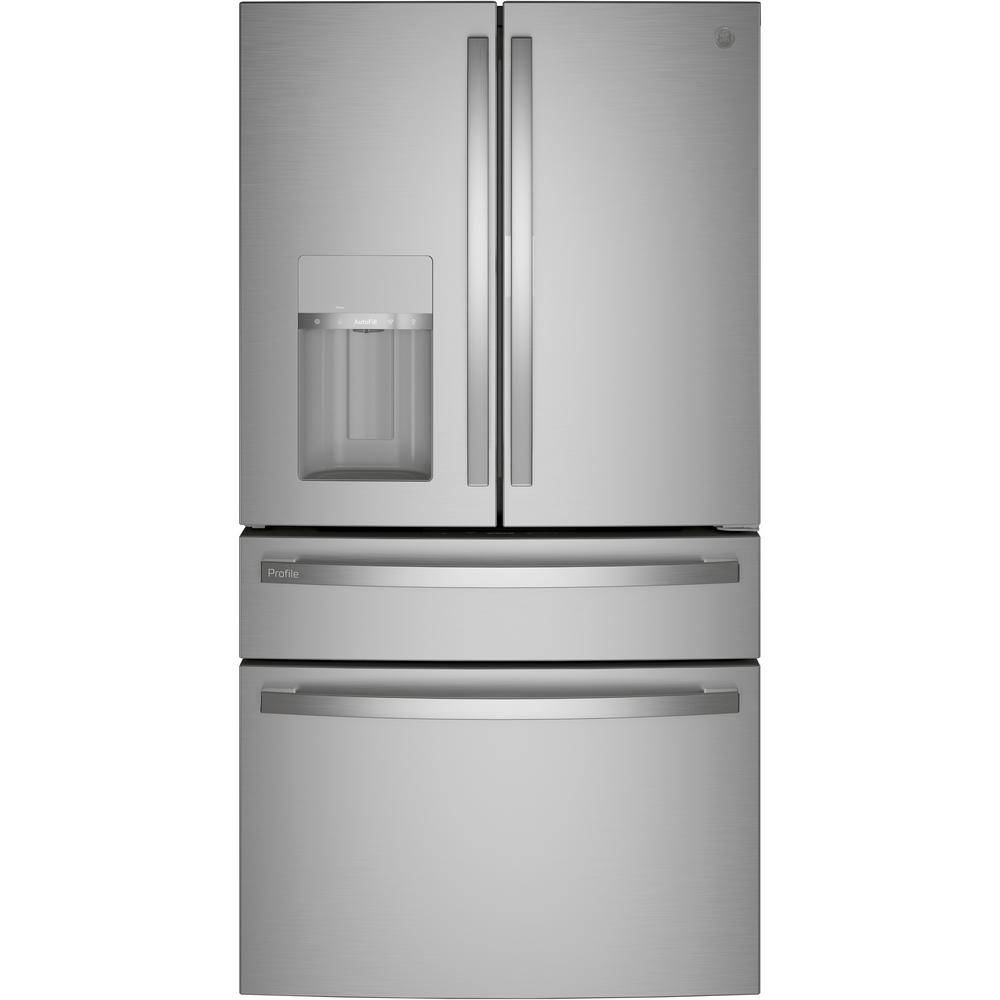
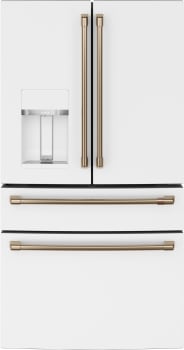
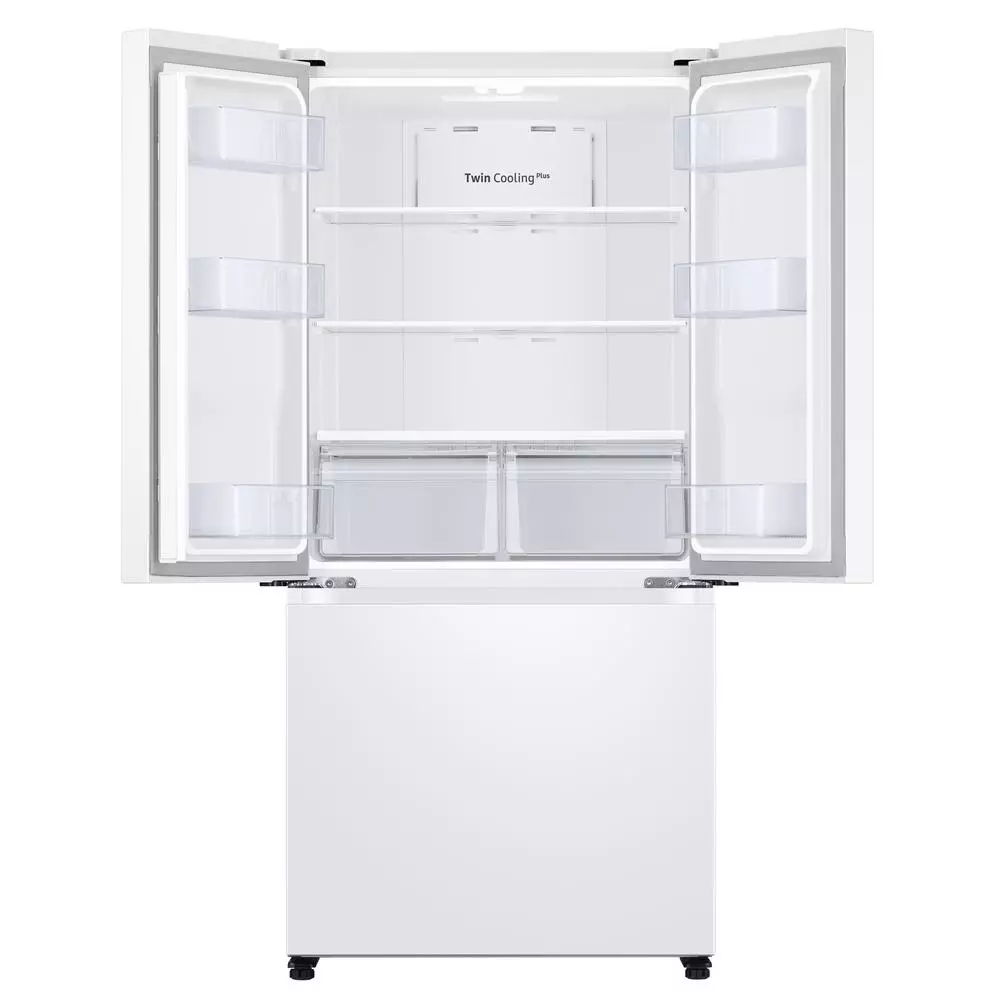
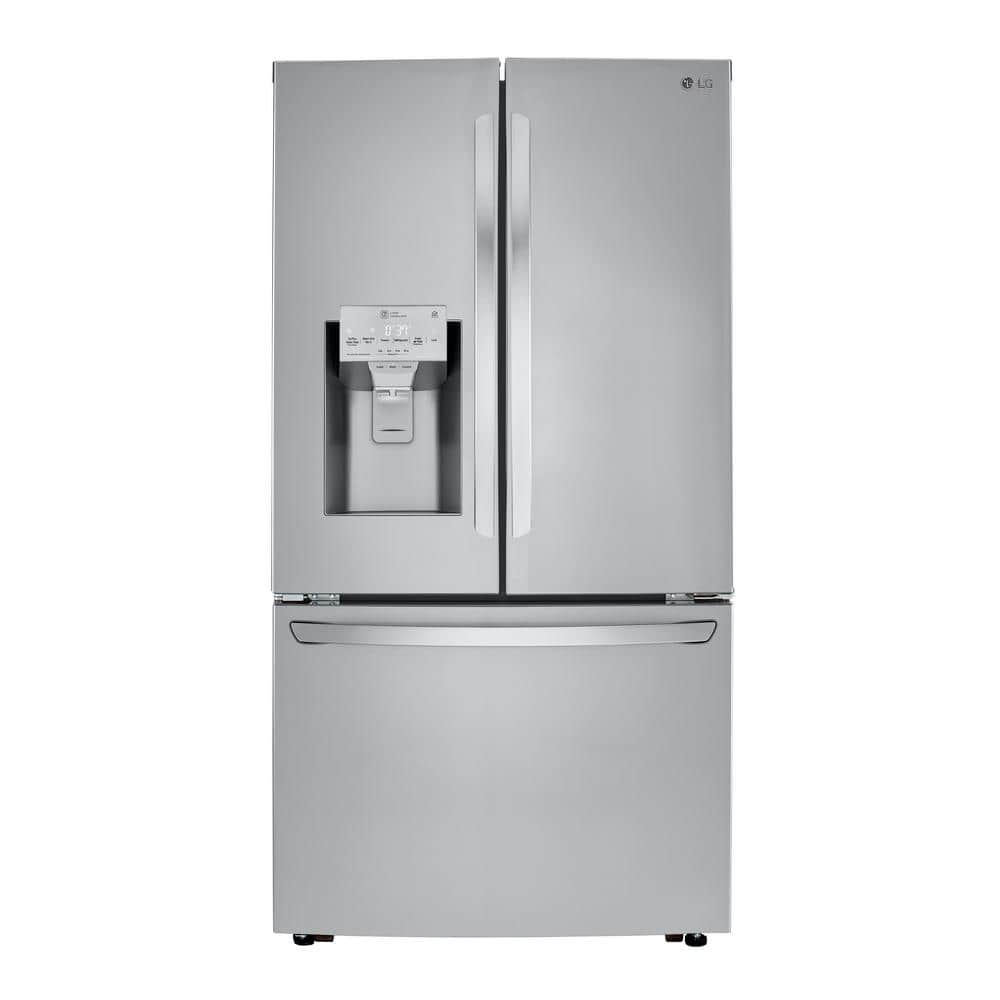
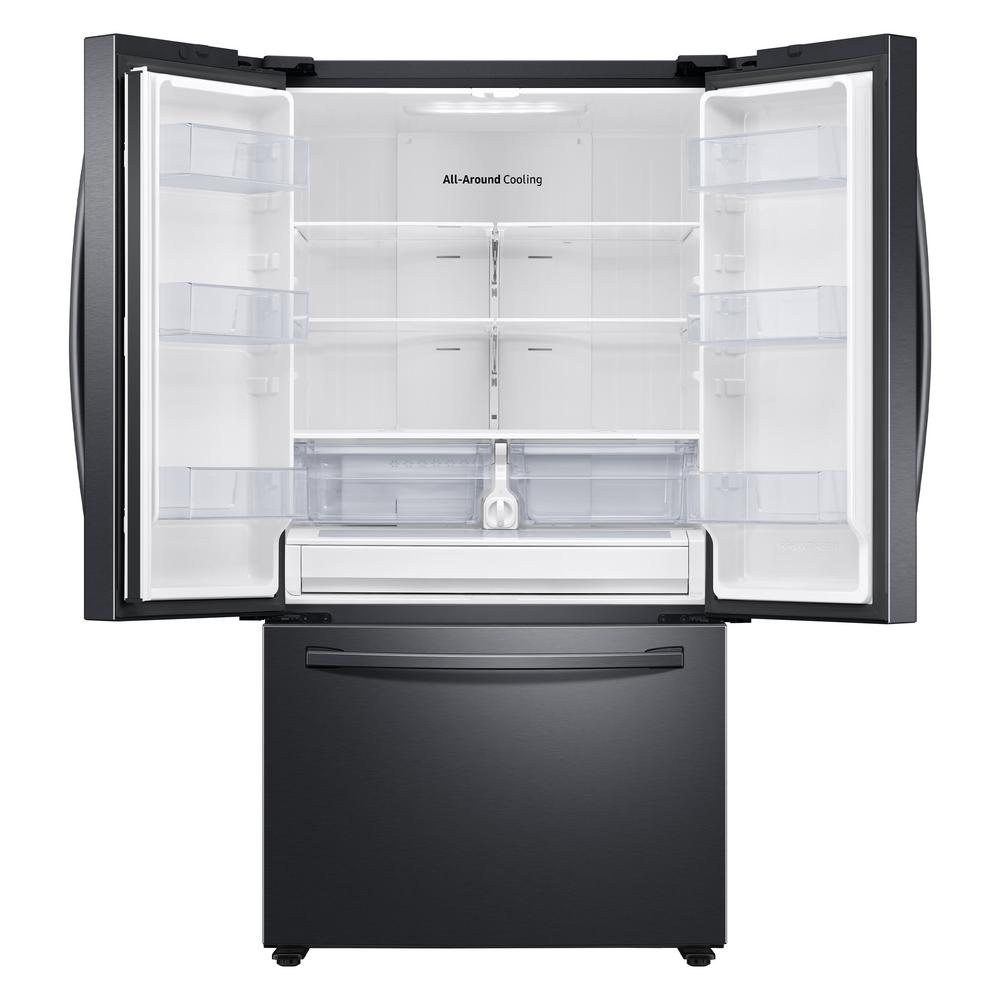
by Danny
Great Product, works great, love the space and the lighting in the fridge. Love the water sensor fill up on the front.
by Vera
Water dispenser features (autofill), touch screen is amazing. Fridge looks very good, back lighting is amazing inside it.
by Deak
Love everything about it. So glad we bought this refrigerator. Plenty of room.
by Nelson
Love the look of this frig. The door in door is great for those quick grabs. The LED lighting is wonderful. Barely hear it running and if you leave the door open you’ll be reminded by the door alarm! Love it!
by Jose
Lots of useable space and storage Very nice appearance Back light panel is nice Many options for food, vegetable, beverage and meat storage Amazing features. Ice maker features are good. Maximum capacity. Smart fridge!
by Bori
The fridge is nice, it is very bright when you open it thanks to the back light. It illuminates the entire thing. I like the half door feature and easy access to the bins. The space is good and the containers for fruit and veggie are actually pretty large. The center compartment with the individual temperature control is awesome it lets me keep certain foods at a different temp than the freezer but colder than the fridge. The freezer is also a bit large and has that slide drawer also. All in all it’s a great fridge. The only thing I saw was the ice chest is small but so is the ice so it makes it pretty fast. Not fast enough to provide for a party but fast enough to keep ice in the container and full.
by Whitney
We are very pleased with our new purchase. From purchasing to it being delivered, everything went smoothly. There was one part damaged in packaging. They immediately took care of and are sending g us a new part. I love how spacious and functional this refrigerator is. And the back drop screen and lighting is phenomenal!
by Miller
We shopped for a long time to find the frig that works best for us & the rating from reviewing online was exceptional. Love this GE Profile French Door Frig. The lighting is so bright with LED lighting and easy access to items inside. Water filter is located in the frig door; so convenient. Space saving ice maker allows you to have more room in your frig. Door in door latch allows for frequent items such a milk, juices without opening the entire frig. Spill proof shelves is a plus too along with the climate zone bins.
by Pedro
We love our new refrigerator so far! We like the wall of lighting and it is so brightly lit. The small drawer organizer is great and we love the quick access door. The only issue is a regular wine bottle fits Unopened but not with a stopper in it and unopened champagne will not fit at all (see pic). Not cool as this was a main feature we were excited about. Just have to drink the whole bottle of wine once opened I guess! Water is great and ice great but drops kind of loud when making ice. We love the lighting in the door also.
by Myles
I love everything about my iggy!!! It can do everything but talk back to me. I love the Wifi features, the Space, the Convience , It’s size, it’s performance, the Icemaker The two freezers at the bottom, I like controlling my iggy remotely